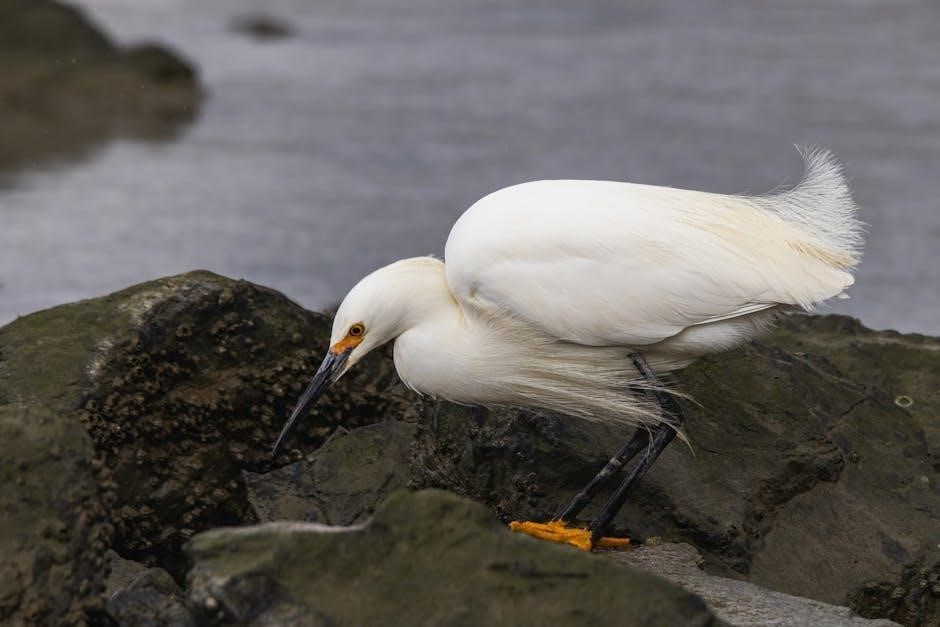Michigan offers exceptional waterfowl hunting opportunities, with its diverse wetlands and migratory flyways attracting a wide variety of duck and goose species annually. Rich in tradition, the state’s waterfowl hunting culture emphasizes conservation, ethical practices, and sustainable use of natural resources, making it a must-visit destination for both novice and experienced hunters.
Overview of Waterfowl Hunting in Michigan
Michigan’s waterfowl hunting is renowned for its diverse opportunities, with abundant wetlands, marshes, and Great Lakes shoreline attracting migratory ducks and geese. The state’s central location along major flyways ensures a rich variety of species, including wood ducks, mallards, and Canada geese. Hunters benefit from well-managed public lands and regulated seasons, ensuring sustainable populations. The Michigan DNR provides updated guides and resources, making it a premier destination for both seasoned hunters and newcomers seeking memorable experiences.
Importance of Conservation and Ethics
Conservation and ethical practices are vital to Michigan’s waterfowl hunting, ensuring sustainable populations and habitats. Hunters must adhere to regulations, respect wildlife, and minimize environmental impact. Ethical hunting supports biodiversity and maintains public trust in hunting traditions. By embracing these principles, hunters contribute to the long-term health of Michigan’s ecosystems and waterfowl populations, preserving this cherished outdoor activity for future generations.
Licensing and Regulations
Michigan waterfowl hunting requires proper licensing and adherence to state and federal regulations. The Michigan DNR ensures hunters comply with legal requirements for a safe and sustainable experience.
Types of Hunting Licenses Required
Michigan waterfowl hunters must obtain a base license and a waterfowl hunting license. A federal duck stamp is also required for hunting waterfowl. Licenses can be purchased online through the Michigan DNR’s eLicense system or at authorized retailers. Hunters must carry their licenses while hunting. Additional permits may be needed for specific hunting locations or activities. Ensure compliance with state and federal regulations to avoid penalties. Licensing requirements vary by residency and age.
Key Regulations and Legal Requirements
Michigan waterfowl hunters must comply with state and federal regulations. Seasons, bag limits, and shooting hours are strictly enforced. Hunters must use non-toxic shot and ensure proper identification of harvested waterfowl. A federal duck stamp is required for waterfowl hunting. Additionally, permits may be needed for hunting on private lands or in designated wildlife areas. Always check the Michigan DNR’s eRegulations for the most up-to-date legal requirements to ensure a lawful and ethical hunting experience.
Hunting Seasons and Bag Limits
Michigan’s waterfowl hunting seasons vary by species and region, with specific bag limits to ensure sustainable hunting practices. Check the Michigan DNR’s eRegulations for detailed information.
Waterfowl Hunting Seasons in Michigan
Michigan’s waterfowl hunting seasons are carefully structured to align with migratory patterns, typically beginning in early September and extending through late December. Seasons vary by species, with ducks, geese, and other waterfowl having specific opening and closing dates. The Michigan DNR provides detailed season schedules, ensuring hunters adhere to conservation goals. Early and late seasons are designed to balance hunting opportunities with species protection, making Michigan a prime destination for waterfowl enthusiasts.

Bag Limits and Species Restrictions
Michigan enforces specific bag limits to ensure sustainable waterfowl populations. Hunters are allowed a daily limit of 6 ducks, with species-specific restrictions, such as no more than 2 mallards or 2 wood ducks. For geese, the daily limit is 5, combining snow, Canada, and white-fronted geese. Possession limits are three times the daily bag. Certain species, like harlequin ducks, are protected and cannot be hunted. Adhering to these limits is crucial for maintaining healthy waterfowl populations and ensuring future hunting opportunities.
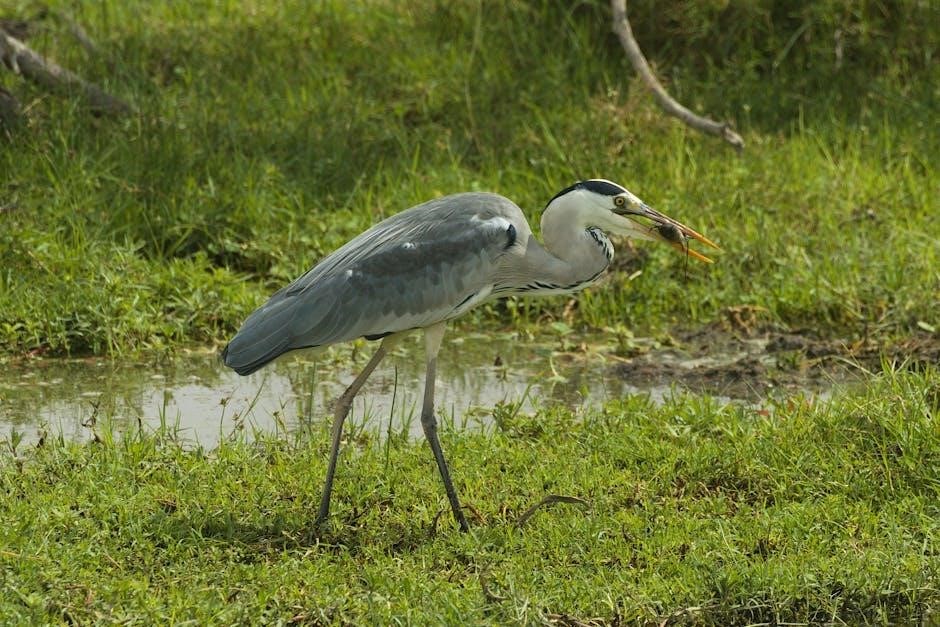
Popular Waterfowl Hunting Spots
Michigan’s Saginaw Bay, Upper Peninsula wetlands, and southern marshes are prime spots for waterfowl hunting, attracting hunters seeking diverse duck and goose species annually.
Public Lands and Wildlife Areas
Michigan boasts extensive public lands and wildlife areas ideal for waterfowl hunting, such as the Saginaw Bay region and Upper Peninsula wetlands. These areas provide abundant opportunities to hunt various duck and goose species in their natural habitats. Public lands are managed to conserve waterfowl populations, offering accessible and productive hunting grounds for both residents and visitors. Hunters can explore marshes, swamps, and coastal zones teeming with waterfowl, making Michigan a premier destination for outdoor enthusiasts.
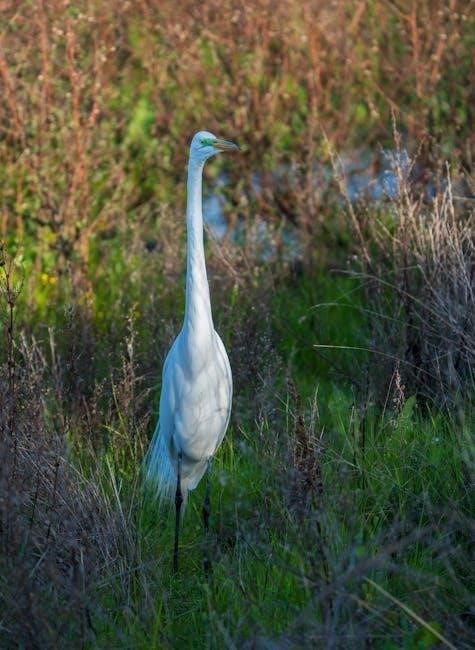
Private Lands and Access Programs
Michigan offers private land access programs, enabling hunters to explore diverse waterfowl habitats on privately owned properties. These programs, often coordinated with landowners, provide unique opportunities to hunt waterfowl in productive areas. Hunters must obtain landowner permission or participate in organized access initiatives. Private lands often feature prime wetlands and agricultural fields, making them ideal for targeting ducks and geese. Respecting landowners’ rights and property is essential for a positive hunting experience.
Waterfowl Species in Michigan
Michigan is a key stopover on the Mississippi Flyway, hosting numerous waterfowl species. Ducks like mallards, wood ducks, and green-winged teal, along with geese, are abundant, offering diverse hunting opportunities.
Common Duck and Goose Species
Michigan’s waterfowl diversity includes species like mallards, wood ducks, and green-winged teal. Canada geese and snow geese are also prevalent, attracting hunters statewide. The state’s location on the Mississippi Flyway ensures a steady migration of species, making it a hotspot for waterfowl enthusiasts. Hunters often target these species, utilizing specific calls and decoys tailored to their behaviors. This variety enhances Michigan’s reputation as a premier destination for waterfowl hunting, offering unique challenges and opportunities for hunters of all skill levels.
Migration Patterns and Habitat Preferences
Michigan’s waterfowl migrate through major flyways, with peak activity during spring and fall. Species like mallards and Canada geese favor wetlands, marshes, and agricultural fields. The Great Lakes shoreline and inland wetlands provide critical habitats for resting and feeding. Understanding these migration patterns and habitat preferences is key to effective hunting strategies, as waterfowl rely on these areas for survival during their journeys.
Gear and Equipment
Essential gear includes shotguns, decoys, blinds, and calls. Camouflage clothing and waders are crucial for concealment in wetland environments. Quality binoculars and sturdy boats enhance hunting success.
Essential Gear for Waterfowl Hunting
Waterfowl hunting requires a reliable shotgun, steel shot ammunition, and a variety of decoys to attract birds. Calls, such as duck and goose calls, are critical for communication. Blinds or portable hides help hunters stay concealed, while camouflage clothing blends seamlessly into the environment. Waders and sturdy boots are necessary for navigating wetlands. Binoculars aid in spotting birds, and a thermos keeps hunters warm during early morning hunts. The Michigan DNR provides guides for selecting the right gear.
Choosing the Right Firearms and Ammunition
For waterfowl hunting in Michigan, a 12-gauge shotgun is the most popular choice, though 10- or 20-gauge firearms are also effective. Steel shot ammunition is required due to federal regulations. Hunters should select shot sizes based on the species and distance of the target. Non-toxic ammunition is mandatory to protect wildlife. Always ensure firearms are in good condition and properly patterned for optimal performance. The Michigan DNR provides specific guidelines on legal firearms and ammunition for waterfowl hunting.
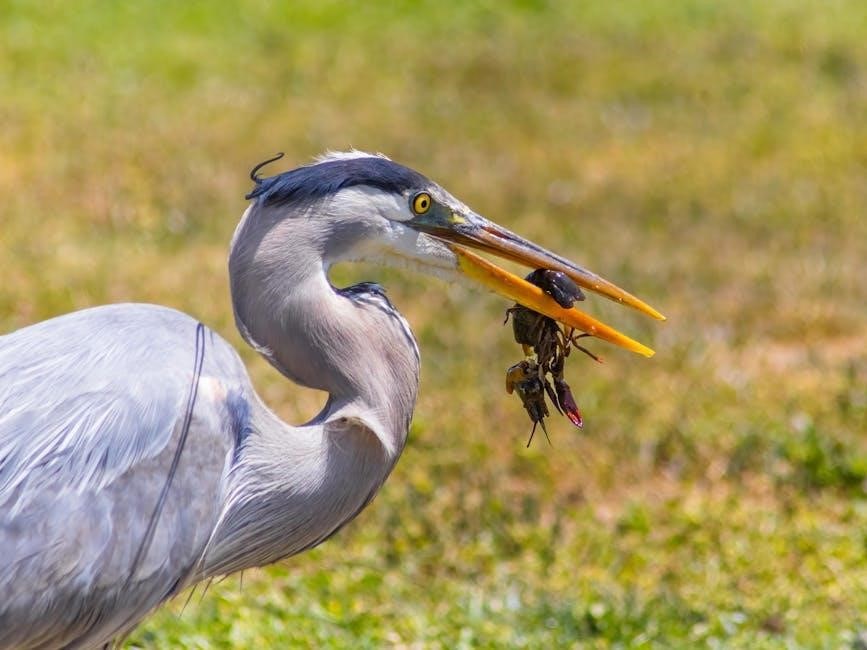
Hunting Techniques and Strategies
Effective waterfowl hunting in Michigan requires strategic decoy placement, precise calling, and concealment. Patience and understanding bird behavior are key to a successful hunt.
Effective Calling and Decoy Strategies
Mastering calling techniques and decoy placement is crucial for attracting waterfowl in Michigan. Use realistic decoys arranged in natural patterns to mimic feeding or resting birds. Calls should imitate species-specific sounds to draw birds closer. Early morning and late evening are prime times for effective calling. Combine these strategies with concealment in blinds or natural cover for successful hunting experiences.
Stalking and Blind Placement Tips
Stalking and blind placement are essential for a successful waterfowl hunt in Michigan. Hunters should move quietly and use natural cover to approach birds undetected. Position blinds near feeding or resting areas, blending them with the surroundings. Early setup allows birds to grow accustomed to the blind’s presence. Avoid sudden movements and maintain patience, as stillness increases the likelihood of attracting wary waterfowl within shooting range.
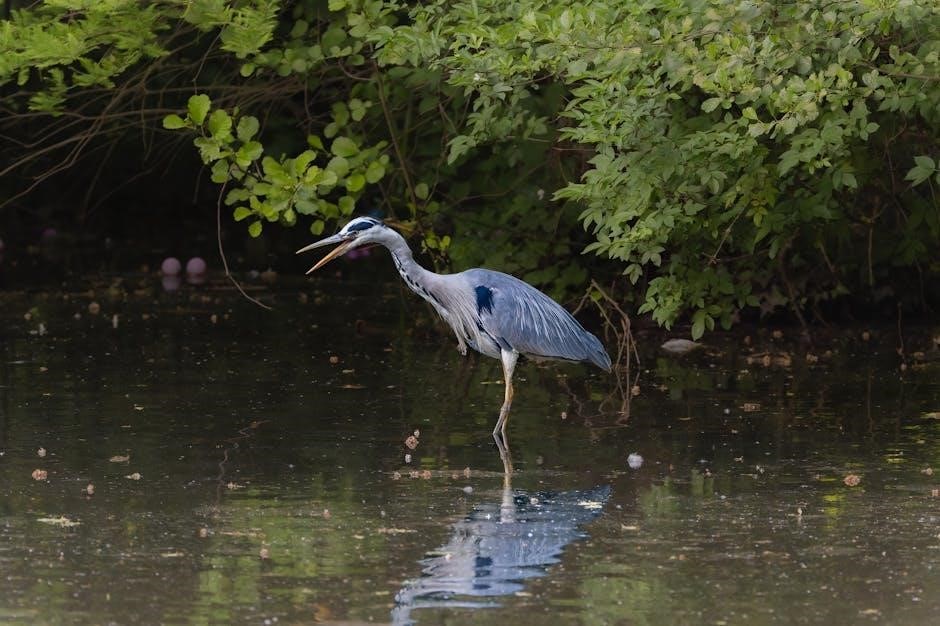
Safety and Best Practices
Always wear a life jacket and blaze orange for visibility. Ensure firearm safety, follow weather conditions, and respect other hunters. Keep the environment pristine by packing out trash and avoiding sensitive habitats to preserve Michigan’s waterfowl heritage for future generations.
Safe Hunting Practices in the Field
Always wear a properly fitted life jacket and ensure your firearm is handled safely. Be aware of your surroundings and weather conditions. Use blaze orange for visibility to avoid accidents. Respect other hunters and the environment by following all regulations. Properly identify targets before shooting and avoid hunting in restricted areas. Keep the field clean by packing out trash. These practices ensure a safer and more responsible hunting experience for everyone.
Respecting the Environment and Other Hunters
Respect the environment by minimizing habitat disturbance and avoiding littering. Always follow “Leave No Trace” principles to preserve ecosystems. Be courteous to other hunters by maintaining a safe distance and communicating intentions. Avoid disrupting other parties and refrain from overlapping hunting areas. Adhere to local regulations and ethical guidelines to ensure a positive experience for all. Mutual respect fosters a welcoming and sustainable hunting community in Michigan.
Local Resources and Communities
Michigan’s local resources include the DNR’s comprehensive guides and regulations, while vibrant hunting clubs and forums foster community engagement and shared knowledge among waterfowl hunters.
Michigan DNR Resources and Guides
The Michigan Department of Natural Resources (DNR) provides essential resources for waterfowl hunters, including detailed guides, season updates, and maps of public hunting areas. Hunters can access digital copies of regulations, species identification tools, and checklists for required permits; The DNR also offers insights into habitat management and conservation efforts, ensuring sustainable hunting practices. These resources are vital for staying informed and compliant, making the DNR a go-to source for a successful and ethical waterfowl hunting experience in Michigan.
Local Hunting Clubs and Forums
Michigan’s vibrant waterfowl hunting community is supported by numerous local clubs and forums. These groups provide valuable networking opportunities, share knowledge, and organize events for hunters of all skill levels. Many clubs host workshops, guided hunts, and conservation efforts, fostering camaraderie and stewardship. Online forums and social media groups also serve as platforms for exchanging tips, discussing gear, and staying updated on seasonal trends, making them indispensable resources for hunters seeking to enhance their experience in Michigan.
Michigan waterfowl hunting offers unforgettable experiences, blending tradition, conservation, and adventure. Plan meticulously, respect regulations, and embrace the state’s natural beauty for a memorable and ethical hunt.
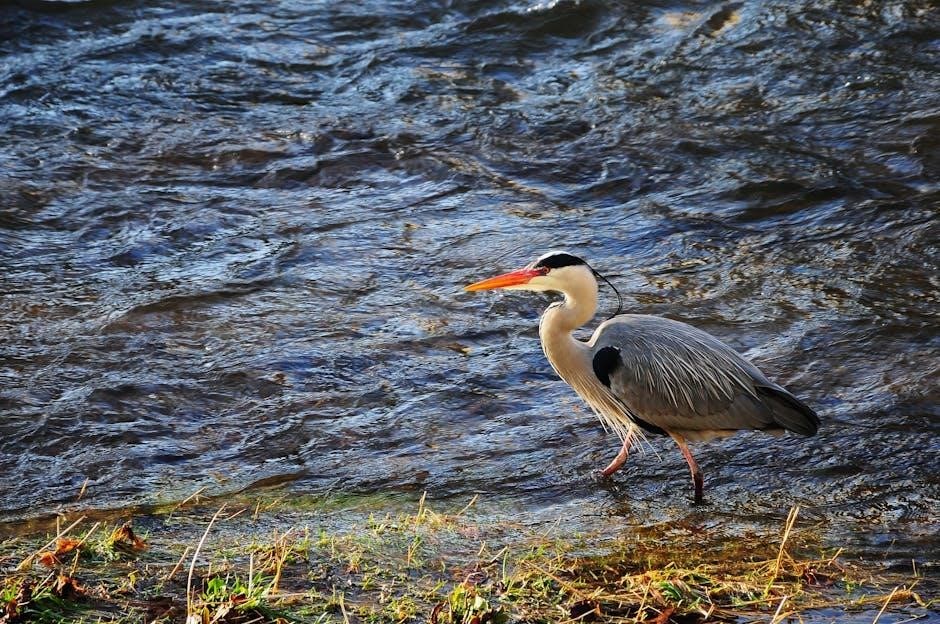
Final Tips for a Successful Hunt
Stay informed about season dates, bag limits, and regulations through the Michigan DNR. Scout locations beforehand and adapt to weather conditions. Practice effective calling and decoy placement. Respect the environment by leaving no trace and following safety guidelines. Hunt ethically, ensuring clean kills and proper harvest reporting. Consider joining local hunting clubs for shared knowledge and camaraderie. Visit the Michigan DNR website for the latest updates and resources.
Staying Informed and Engaged
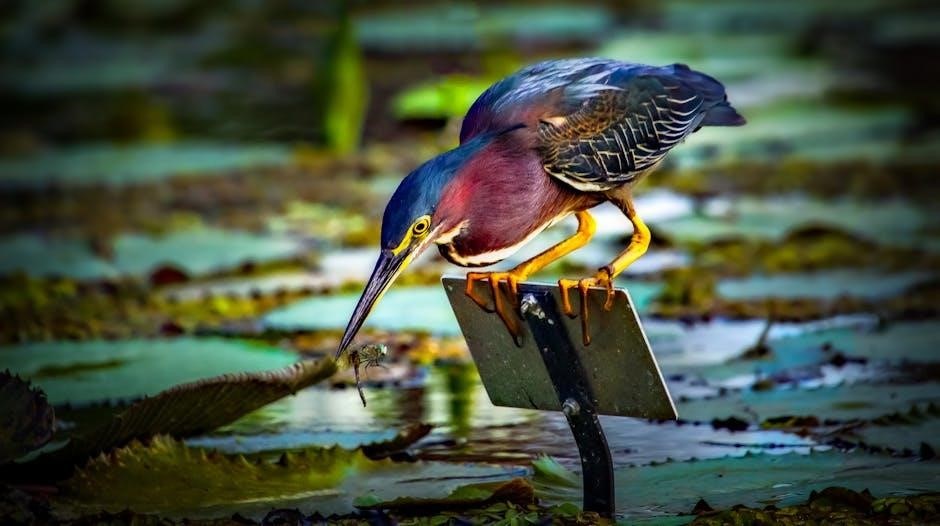
Stay updated on Michigan waterfowl hunting by visiting the Michigan DNR website for season dates, regulations, and conservation updates. Participate in local hunting forums and join clubs to share experiences and gain insights. Engage with wildlife refuges and conservation organizations to support habitat preservation. Regularly check the eRegulations guide for the latest legal requirements and hunting opportunities. Active involvement ensures a sustainable and enjoyable hunting tradition for future generations.
